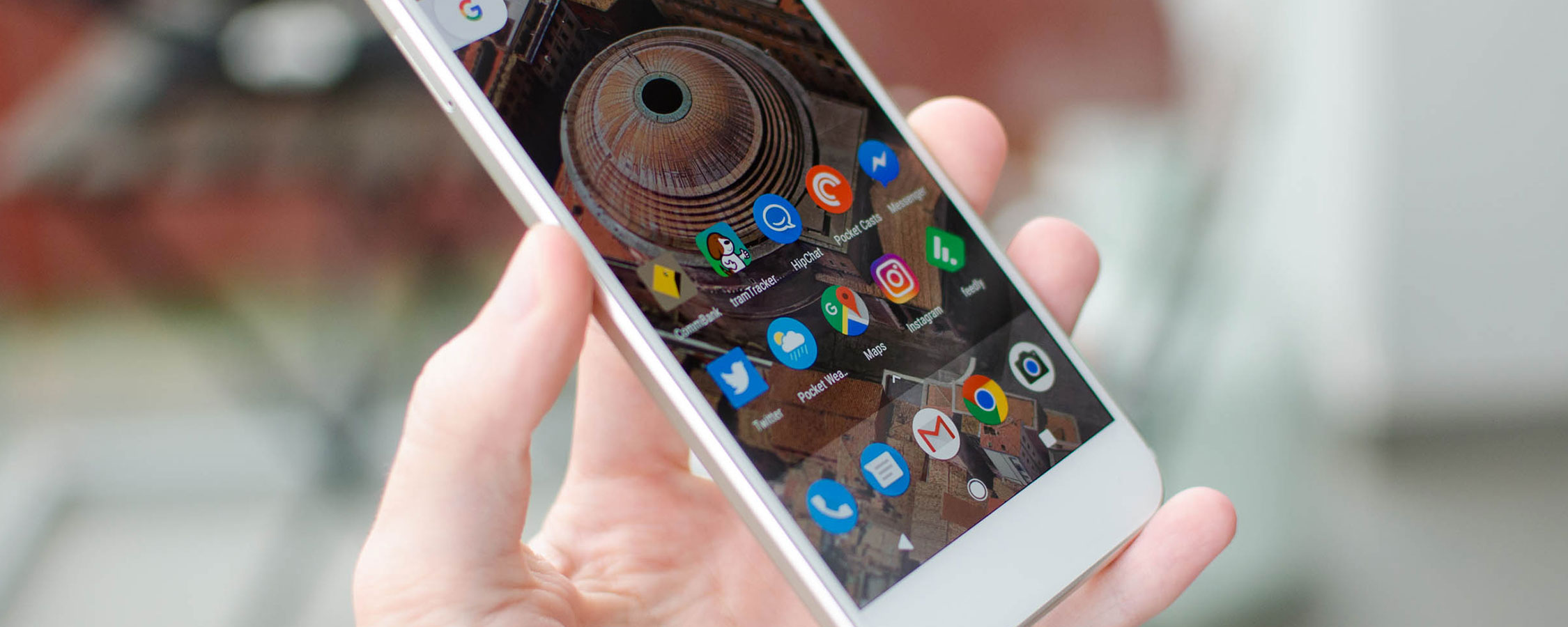Display Impressions, Tests
The larger of the two Pixel phones comes with a 5.5-inch AMOLED display with a resolution of 2560 x 1440, equating to a pixel density of 534 PPI. The smaller phone packs just a 5.0-inch 1080p AMOLED, so by purchasing the larger model you also get a higher resolution. Considering a major feature of the Pixel phones is support for Google's VR ecosystem, Daydream, the higher resolution display on the Pixel XL could deliver a better virtual reality experience. Outside of VR, the 1440p display here is crisp and delivers beautiful imagery in general.
As Google has opted for AMOLED panels, there are several advantages in play. Due to extremely deep blacks and an essentially infinite contrast ratio, colors really pop. Viewing angles are also excellent in general, and Google claims a 40% decrease in brightness when viewed at 30-degrees.
Maximum brightness when displaying an all-white image is usually an issue with AMOLED panels, and that's no exception on the Pixel XL. Brightness is below 400 nits here, and there is no sunlight brightness mode that gives this a boost above 500 nits, which is something Samsung provides on their AMOLED-laden Galaxy S7 series. Viewing in strong outdoor lighting is still possible, as AMOLED brightness isn't directly tied to full-white brightness, but it's not as good as top-end LCDs or the best AMOLEDs I've tested.
Color performance from the Pixel XL's AMOLED is interesting, which is usually the case for AMOLED smartphones. In its default mode, the display is oversaturated as the gamut extends well beyond sRGB. The display actually covers 97.6% of the Adobe RGB spectrum, and a huge 145.8% of the sRGB spectrum, so we're seeing significant oversaturation across the board as Android has no color management utilities to properly utilize color spaces larger than sRGB.
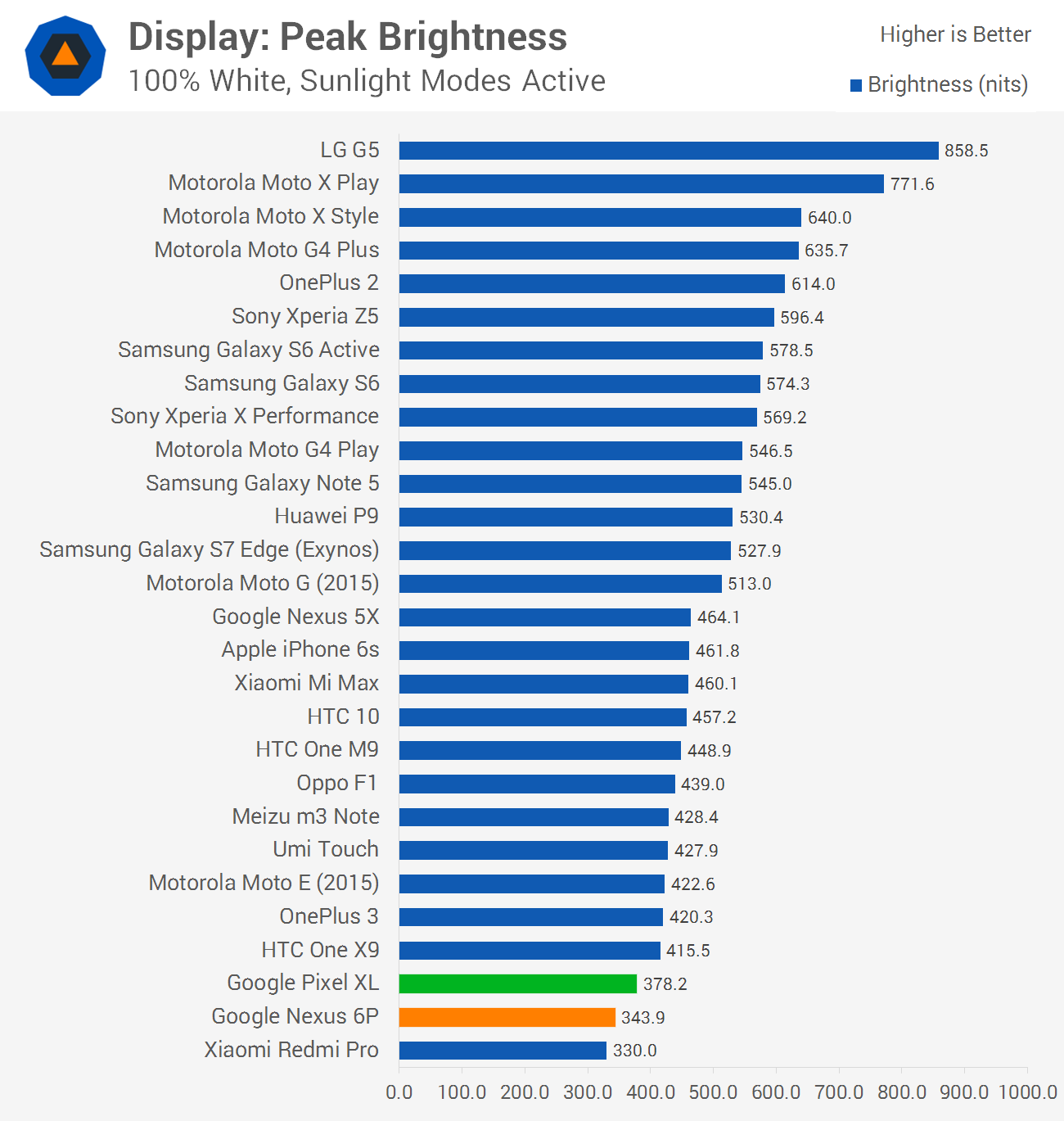
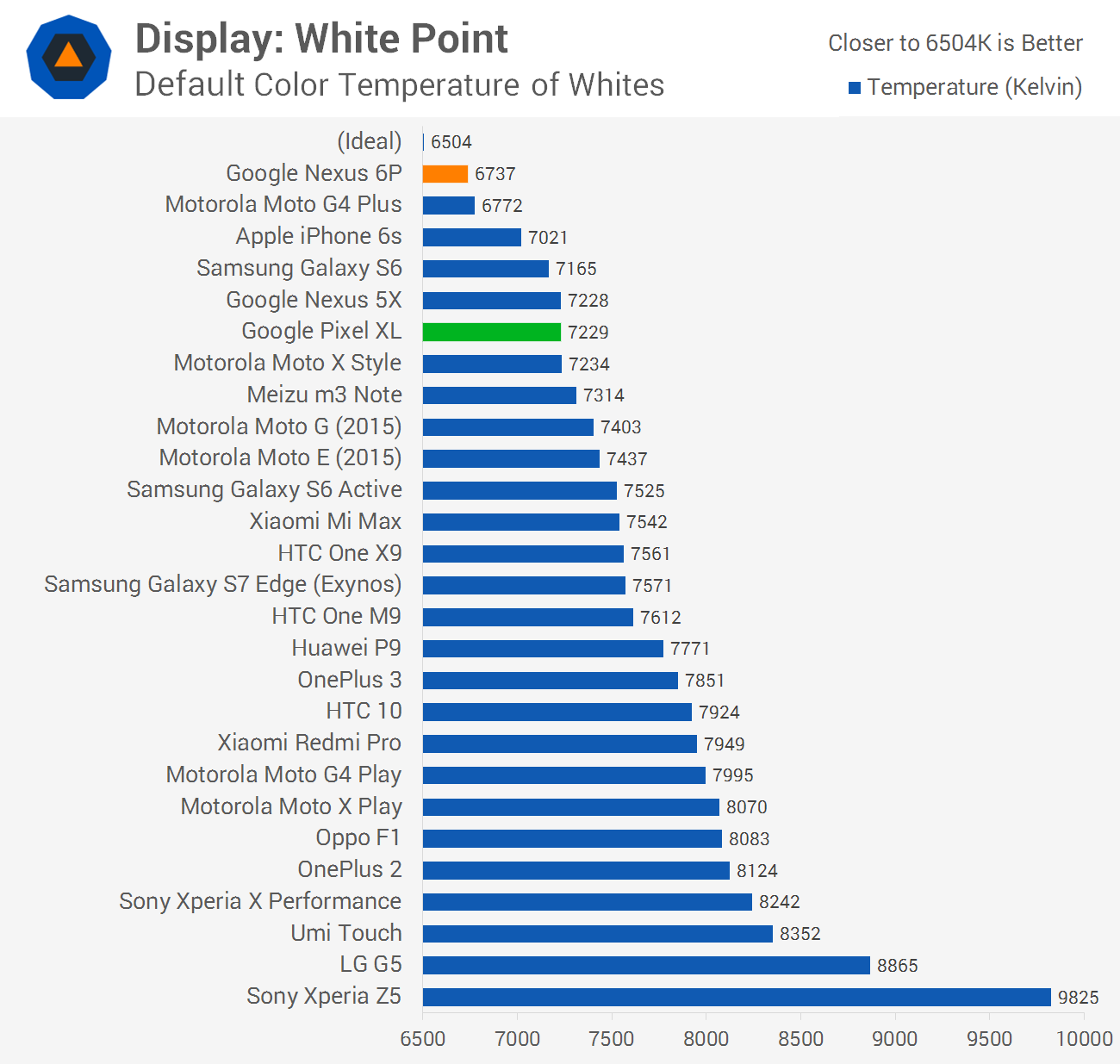
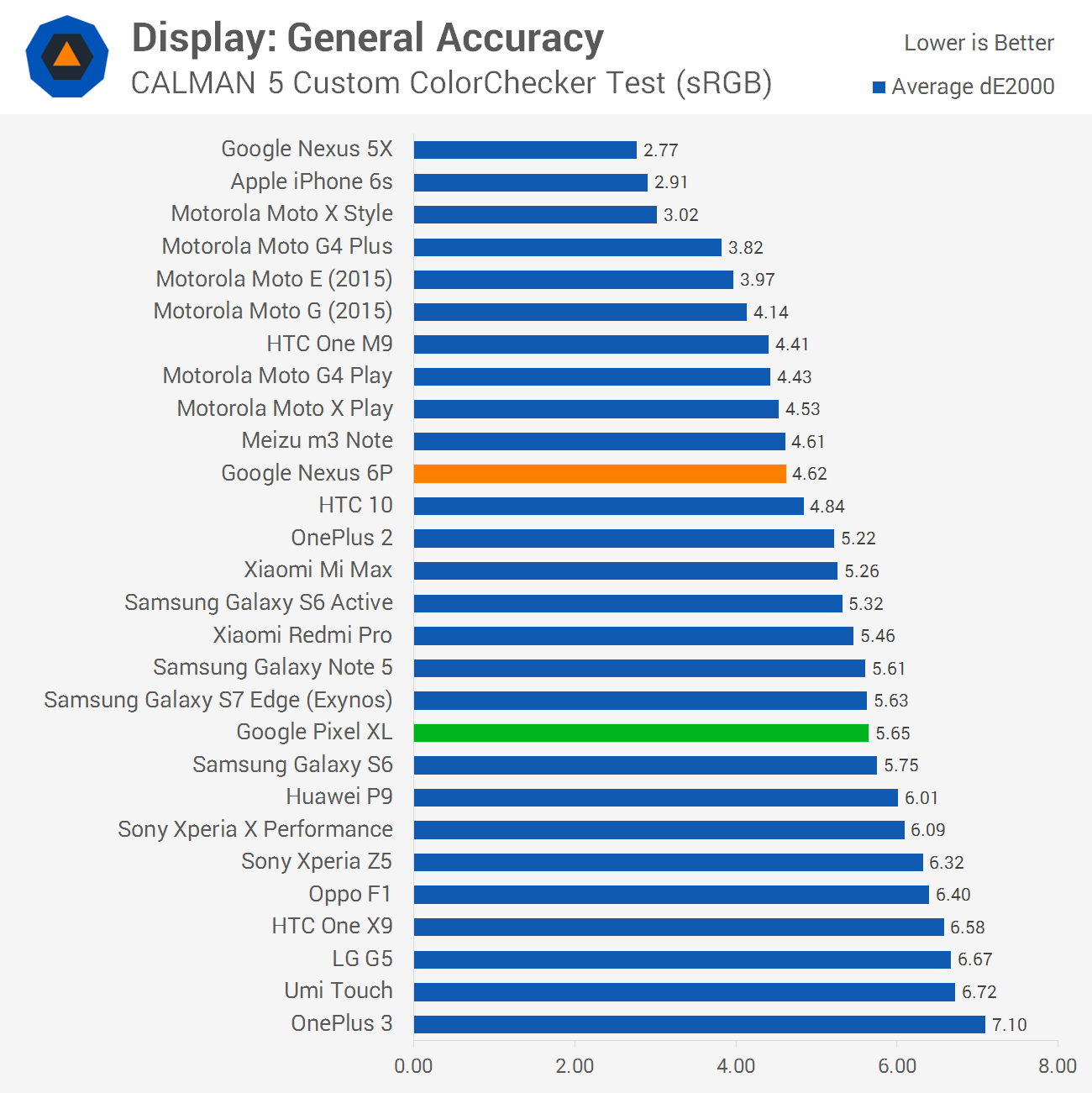
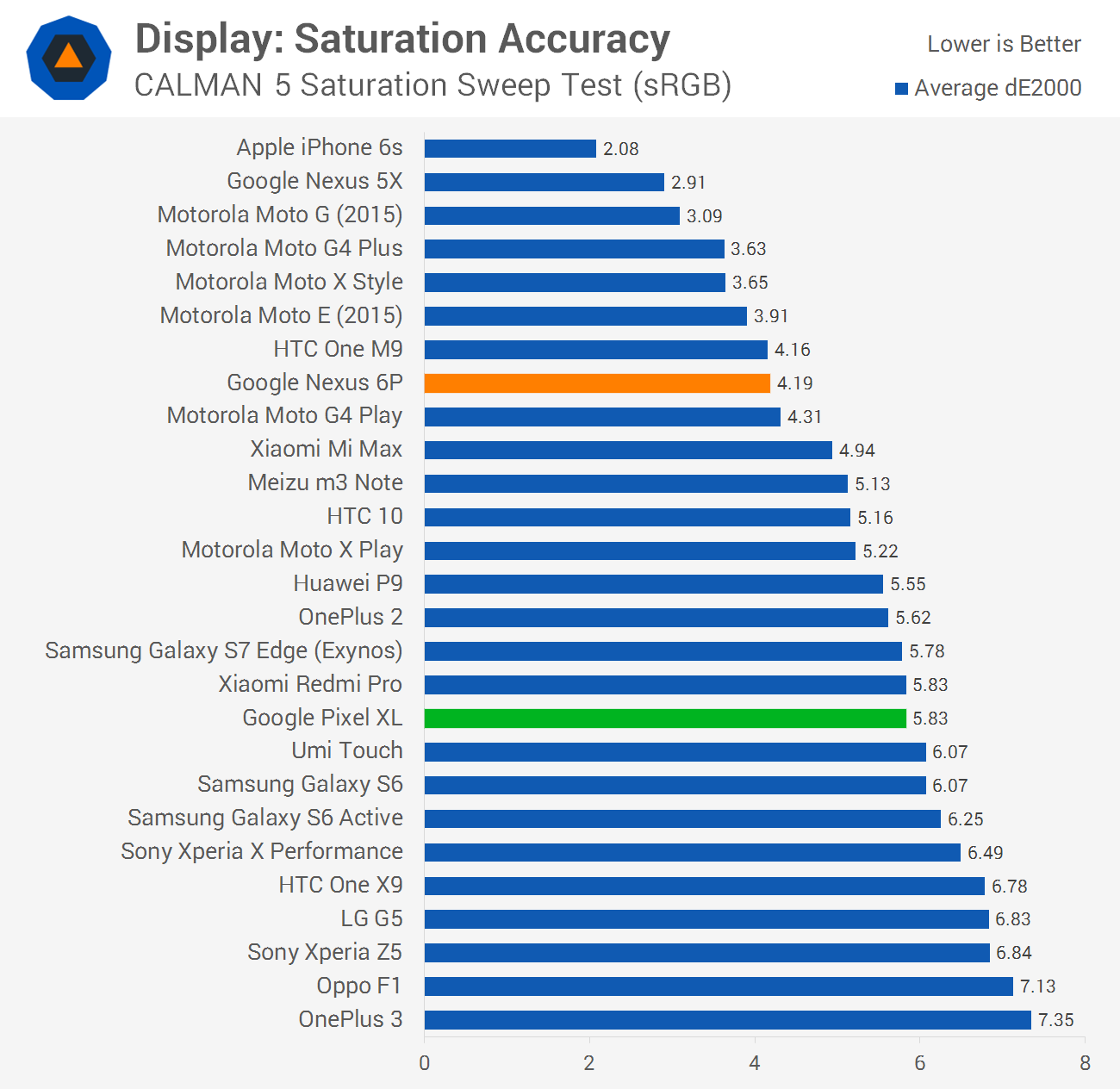
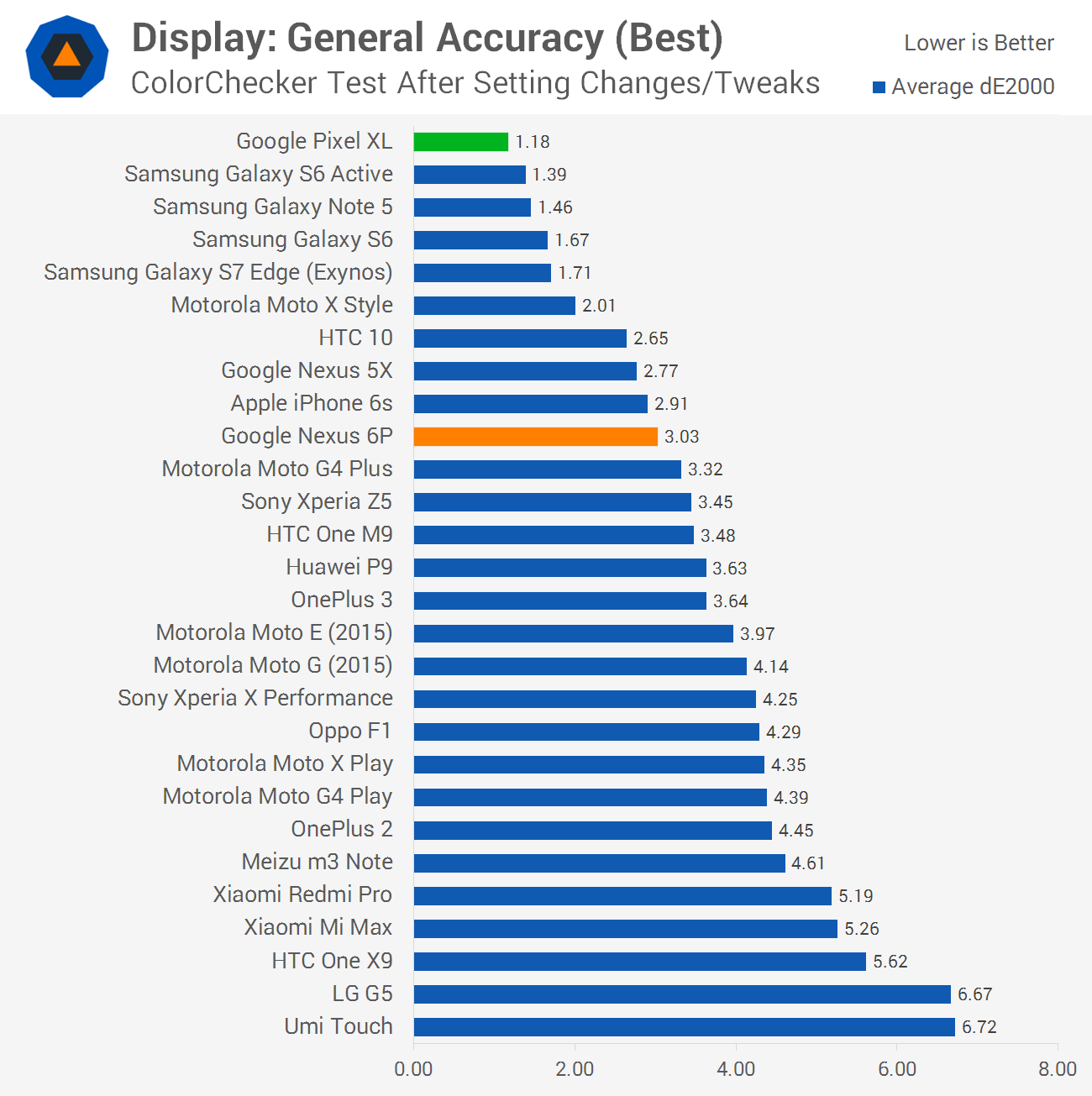
Google states that the Pixel XL covers 100% of the outdated NTSC color space, although in my testing I saw coverage closer to 90% for NTSC. In any case, it doesn't really matter, as near-full Adobe RGB coverage is an excellent addition if the OS actually supported it properly.
For everyday users who don't care much about color accuracy, the Pixel XL delivers extremely vibrant images that look fantastic. Photos you capture will look better on the phone's display than on your TV or computer in all likelihood, while apps and games really pop. This is one of those displays that, at a first glance, looks simply fantastic.
Google also caters for creative professionals and other users who demand a color accurate display. In the developer options you'll find a toggle, which was also seen in the last generation of Nexus phones, that switches the Pixel XL over to an sRGB color mode. On the Nexus 6P this sRGB mode was somewhat effective at improving accuracy, but Google has taken the mode to another level on the Pixel XL.
In my testing with the Pixel XL in its sRGB mode, this display is the most accurate I have seen. In my punishing custom CALMAN 5 accuracy test, the Pixel XL recorded an astonishing dE2000 value of 1.18, which indicates near-perfect color performance. The Pixel XL also reported near-perfect grayscale accuracy and spot-on gamma.
Not everything about this display is perfect. The sRGB mode tints the display slightly yellow (6333K), so the overall color temperature is not ideal (6504K) and this is noticeable in photos with a lot of white. The total gamut isn't quite sRGB either, and falls somewhat short in blues and reds for total coverage of 92.8%. This only affects top-end saturation as color accuracy is fantastic through the mid-tones.
I was also quite impressed with the Pixel XL's automatic brightness mode, which works very well and delivers smooth brightness changes. It's these little things that improve the experience with high-end smartphones.
